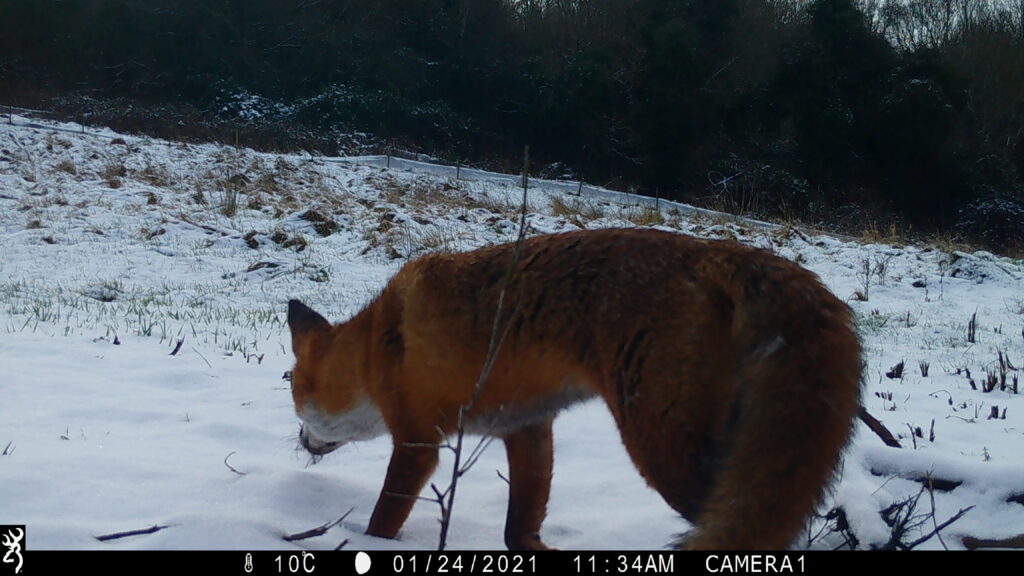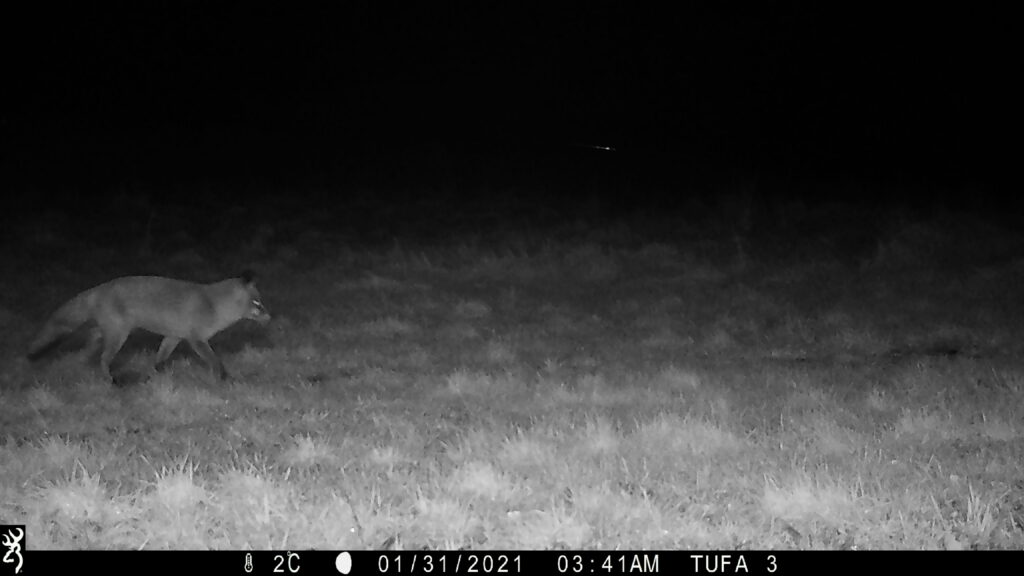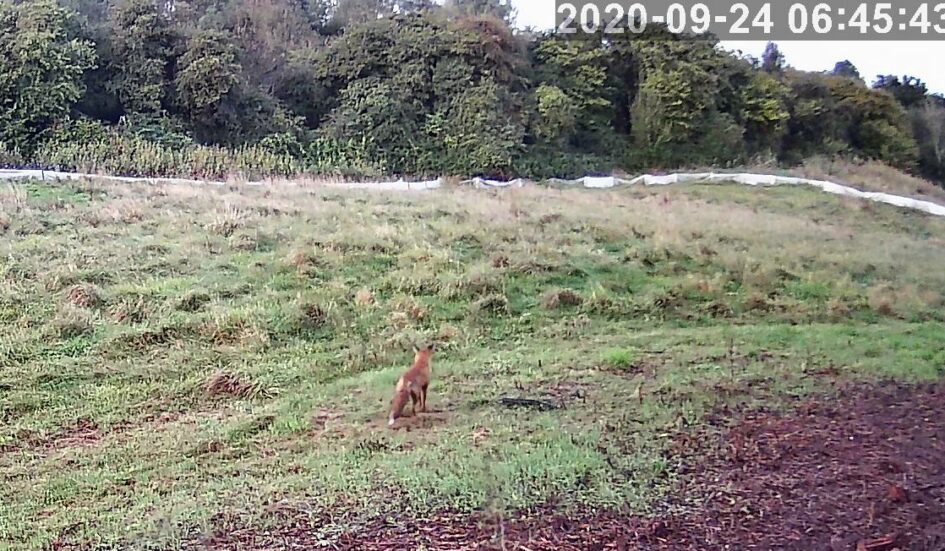The foxes we see at the Tufa Field ( and in our streets and gardens) are Red Foxes, Vulves Vulves.

Fox in the Snow
These are extremely common across the whole of the northern hemisphere, being a top predator and highly adaptable to changing environments. As we remove their natural habitats, they adopt our urban settings as their home and hunting grounds.
Foxes are omnivorous, but prefer meat, and normally feed on small mammals such as rodents voles, squirrels etc. They are also partial to fallen garden fruit, and when times are hard will eat vegetables too.
Their size ( about 50cm at the shoulder) and agility means that they will climb fences and are prodigious diggers, so will also excavate under fences and cages.
Foxes are only distantly related to dogs, despite their appearance, both belonging to the family of Canidae. But though sometimes cute to look at we should always remember these are wild animals, capable of inflicting vicious bites. Foxes also carry parasites such as Toxocara canis, like dogs and cats, capable of causing Toxicariasis in humans, so avoid direct contact with faeces.
Foxes dig or commandeer dens (earths) and these can be found in and around the Tufa Field, although foxes are territorial. Each territory is occupied by a fox family group. These often consist of a pair (dog fox and vixen) and their cubs. However, in areas where foxes are not persecuted and where there is a plentiful supply of food, a family group may contain several adults.
Usually only one vixen in a group produces cubs, once a year in the spring. Litters average four to five cubs though typically we only see 2-3 . They can also be born under garden outbuildings. A vixen stays in the earth with her cubs for the first two weeks of their lives. At about four weeks old, usually in late April or early May, cubs begin to come into the open, but don’t start to reach adulthood for several months.
Although up to 9 years old has been recorded in the wild, most survive only one to three years, usually due to human interaction. Many are killed by road collisions, while traps and shooting are still allowed for farmers and growers. Foxes are not a protected species (although hunting with dogs was outlawed in 2005).
Red foxes are very vocal compared to other fox species. They use barks, whines and throaty noises for a number of communication purposes, from conversations with their young to alarm calls and aggressive ‘gekkering’.

Red fox at Night
In the hierarchy of species at the Tufa Field, the Red Fox counts as an apex predator, one below humans. Destruction of the field will not affect the numbers of these splendid animals, but their loss should be keenly felt by all who have the best interests of our decreasing wildlife at heart.











 Total views : 89291
Total views : 89291

Leave a Reply